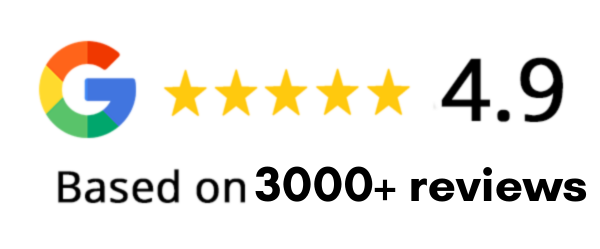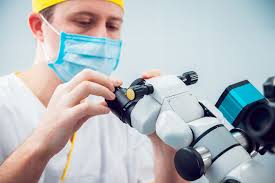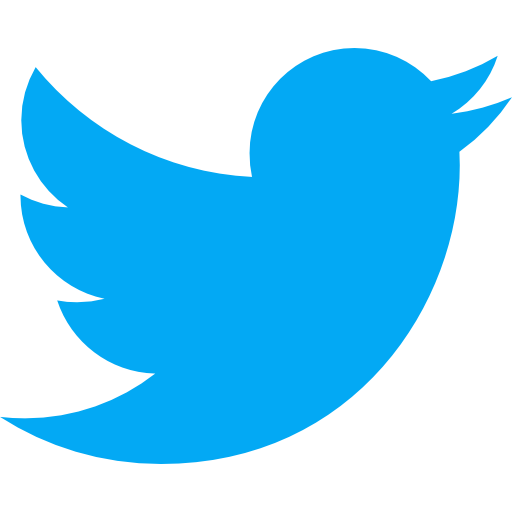Table of Contents
ToggleHave you ever thought about how a simple procedure can change someone’s life? Degenerative myopia affects many, making everyday tasks hard. But, degenerative myopia Lasik offers a new hope. It uses advanced technology to correct vision and bring back confidence.
This article explores degenerative myopia, its symptoms, and the LASIK solutions available. It also looks at the future for those with this condition.
Key Takeaways
- Degenerative myopia affects clear vision, complicating everyday activities.
- Differentiates between standard myopia and degenerative myopia.
- Lasik treatments for degenerative myopia can greatly improve vision.
- Understanding LASIK technology is key for those considering it.
- Many other treatments for myopia exist beyond LASIK.
- New technologies promise better ways to manage myopia in the future.
Understanding Myopia and Its Impact on Vision

Myopia, or nearsightedness, makes it hard to see things far away but easy to see things close up. This happens when the eyeball is too long or the cornea is too curved. This shape problem makes light focus wrong on the retina.
Things like too much close-up work, lots of screen time, and family history can cause myopia. It’s a common problem that affects many people.
In kids and teens, myopia can get worse as their eyes grow. If it gets too bad, it can turn into degenerative myopia. This is a serious form that can hurt your vision a lot if not treated.
It’s really important to understand myopia, whether you’re thinking about fixing it or not. Knowing about it helps you make good choices for your eyes.
Signs and Symptoms of Degenerative Myopia
People with degenerative myopia often face challenges in their daily lives. Seeing distant objects clearly is a big problem. They might squint a lot, but this only helps for a short time.
Eye strain is common, leading to headaches. These headaches often happen after reading or using screens for a long time.
As degenerative myopia gets worse, serious problems can occur. Issues like retinal detachment or macular degeneration are serious risks. If you’re experiencing these symptoms, talking to a doctor about severe myopia surgery might be necessary.
Being aware of these symptoms is key. It helps in getting a diagnosis and managing the condition effectively.
Diagnosing Degenerative Myopia
To diagnose myopia, an eye care professional must perform a detailed eye exam. This exam includes tests to check your vision and how your eyes focus. It also looks at the retina and optic nerve for more information.
Getting a precise diagnosis is key to understanding degenerative myopia. It helps identify how severe the myopia is and if there are any complications. This information is vital for choosing the right surgery. Knowing about your condition helps you make better choices for your eye health.
Degenerative Myopia Lasik: An Innovative Solution
Degenerative myopia lasik is a big step forward in fixing vision problems. It changes the shape of the cornea so light hits the retina right. This is great for people with severe and getting worse myopia, as it lets them see clearly without glasses.
Bladeless Femto LASIK is a top choice for fixing myopia. It uses a fast laser to make a thin flap in the cornea. This method heals faster and works better than old ways. It’s also less invasive, making it more comfortable for patients.
As technology gets better, lasik for myopia stays a key part of eye care. People can do more things easily because they can see better. Choosing this treatment can really improve your life and how you see the world.
Alternative Myopia Treatment Options
Besides LASIK, there are many other ways to treat myopia. Eyeglasses and contact lenses are common choices. They give quick relief from blurry vision. Orthokeratology, or Ortho-K, is another option. It uses special lenses to change the shape of the cornea while you sleep.
Phakic intraocular lenses are a surgical choice for those with high myopia. They are implanted inside the eye to improve vision. Clear lens extraction is also an option for progressive myopia. It involves removing the natural lens and replacing it with an artificial one.
New technologies like bionic eye systems are on the horizon. They aim to help people with progressive myopia see better. These options give people more ways to manage their myopia, meeting different needs.
The Future of Myopia Management
The future of myopia management is bright, thanks to new technologies. Myopia is becoming more common worldwide, making effective treatments urgent. New methods are being developed to correct myopia in a way that suits each person.
Scientists are looking into bionic eyes and better laser tech for myopia. These could make treatments safer and more effective. This means better vision care for everyone.
Now, treatments are moving towards personalized care. This includes not just fixing vision, but also preventing myopia. This approach can greatly improve eye health and reduce myopia risks.
As vision care advances, it’s key to keep up with new treatments. This commitment helps ensure myopia is managed well. It shows a strong focus on finding the best ways to treat myopia.
Conclusion
Degenerative myopia can really change how we live, making everyday tasks hard. But, new treatments like degenerative myopia lasik are changing that. These methods not only improve our sight but also give us hope and freedom from glasses.
It’s important to know about myopia, its signs, and symptoms. This knowledge helps people get the right treatment fast. With many options, like LASIK, people can find what works best for them.
Medical technology is getting better, and so is myopia care. This means more people in India will get help for their vision. This change not only helps our eyes but also makes life better, letting us enjoy our daily activities more.











